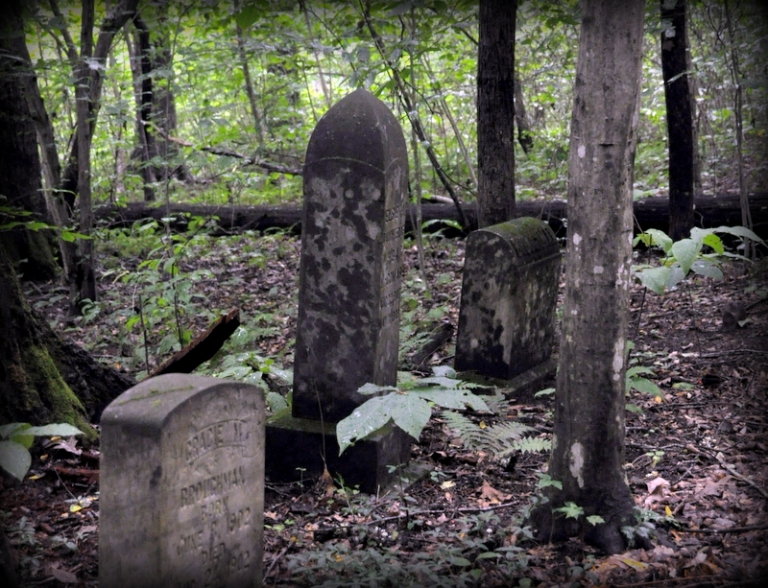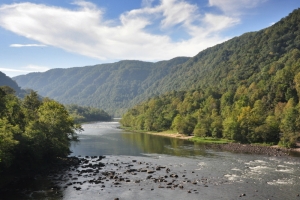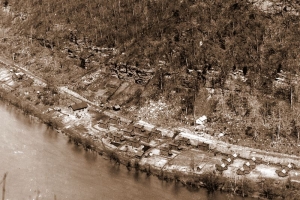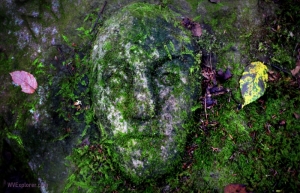
THURMOND, W.Va. — Victims of a smallpox pandemic that swept through the New River Gorge in the late 1800s may have been buried in a remote cemetery on what many now call the 'Island of the Dead.'
Though remote, the island is accessible during low water in the New River Gorge National Park and Preserve.
Though details are obscure, a temporary hospital for smallpox victims was established across the river from the island—Red Ash Island—which is also the site of a burial ground containing victims of two local mine disasters.

Some believe the smallpox victims were also buried on the island, which, in any case, has attracted the interest of historians and local history buffs for decades. However, access to the island is limited to all but the most intrepid hikers and kayakers. The channel separating the island from the riverbank has filled in and is now traversable on foot.
"It's a lonely and forgotten place," says Levi Moore, an outdoor adventure guide who occasionally leads visitors there.
"It's about a two-mile walk from the trailhead, and you could easily spend an hour wandering the island and exploring the cemetery. It's a quiet place and saddening."
The burial ground is one of the few remnants of the Industrial Revolution in the now-forested gorge. Tens of thousands of miners worked its coal in the late 1800s and early 1900s, living in towns that crowded the river's banks and stair-stepped up the flanks of the narrow canyon.
Today, the gorge is practically uninhabited, though since 1978 the National Park Service has managed to preserve and restore what remains of its mines and ghost towns—often little more than loose foundations of stone covered in moss.
Only a handful of headstones linger on the island, canted in the woods near other unmarked graves and rough fieldstone markers.
"You can still see a lot of what's left in winter and spring when the leaves are off the trees, though it's hard to see much in summer," Moore says.

Two deadly mine disasters occurred in 1900 and 1905 at the Red Ash Mine, located high on the flank of the gorge nearby.
The first disaster occurred on March 6, 1900, when a miner inadvertently left a ventilating trap door open, allowing methane to build up in the tunnels. Headlamps on miners' caps ignited the methane and kegs of blasting powder. The explosion killed 46 miners, most of whom suffocated from carbon monoxide inhalation.
The second disaster occurred on March 18 and 19, 1905, when a mine car ran over loose explosives, igniting coal dust, resulting in an explosion that killed 13. The next day, 11 rescuers were killed by a second explosion.
Some of the miners appear to have been buried on the island, while the bodies of others were transported out by rail.
Less is known about the smallpox outbreak and how many victims might have been buried at the now-remote locale. Some believe their bodies were rowed across the river to the island for burial, while others believe they were all transported out on the railroad that followed the river through the gorge.
Perhaps the best description of the gorge's pandemic facility was reported by the late historian Shirley Donnelly, who published the following information culled from former resident Edward Grafton.
Pennbrook was located at the mouth of Ephraim's Creek across the river from the island, though no mention of the burials was made.
In Edward Grafton's day on New River, Fayette County had a pest house where people with smallpox were sent to recover or die. It was at Pennbrook and was maintained for something like five years or more.
Railroad authorities put in a short siding just west of where Ephraim's Creek flows into the New River. Next, the railroad provided a boxcar to transport the patients to the pest house.
Whenever a new case of smallpox was discovered, the railroad people sent a switch-engine to get the car. A male nurse went with it to accompany the patient to the pest house.
The smallpox doctor was Dr. Rappold. He was a coal company doctor from the New River section. One day Dr. Rappold's mother-in-law went there to visit her daughter, and while on the visit contracted smallpox and died very suddenly. Many others died there from the dread disease.
All members of the Grafton family were vaccinated and escaped the malady.
One of the patients at the pest house was the late Ben D. Keller (Sept. 6, 1889-June 5, 1961), the noted court reporter. Ben once wrote for me his recollections of his sojourn as a 'guest' at the Fayette County pest house at Pennbrook.
The Pest House complex was comprised of three buildings. One was on the open glen near the mouth of Ephraim's Creek. A second was a house for men only a few hundred yards up in the woods from the creek. The third house was the one occupied by the doctor.
The pest house was abandoned near 10 years, then the buildings were torn down by the Pennbrook Coal Co.
Red Ash Island is on the seven-mile Southside Trail in the New River Gorge National Park and Preserve. The unmarked trail leading to the island is located approximately two miles above the trail's downstream trailhead at Brooklyn.
Hikers may be able to spot a worn area on the river side of the trail that indicates the direction. For specific directions and information about access, contact the National Park Service here.
Map showing Red Ash Island
Sign up to receive a FREE copy of West Virginia Explorer Magazine in your email twice weekly. Sign me up!
Iconic stone face attracting curious in New River Gorge

An enigmatic stone face carved into mossy sandstone along the rim of the New River Gorge is attracting increased attention. Though its origins are popularly regarded as a mystery, the bas-relief countenance was likely carved in the 1950s, and the son of its creator may still live in the area near Fayetteville, West Virginia. Read the full story here.






























